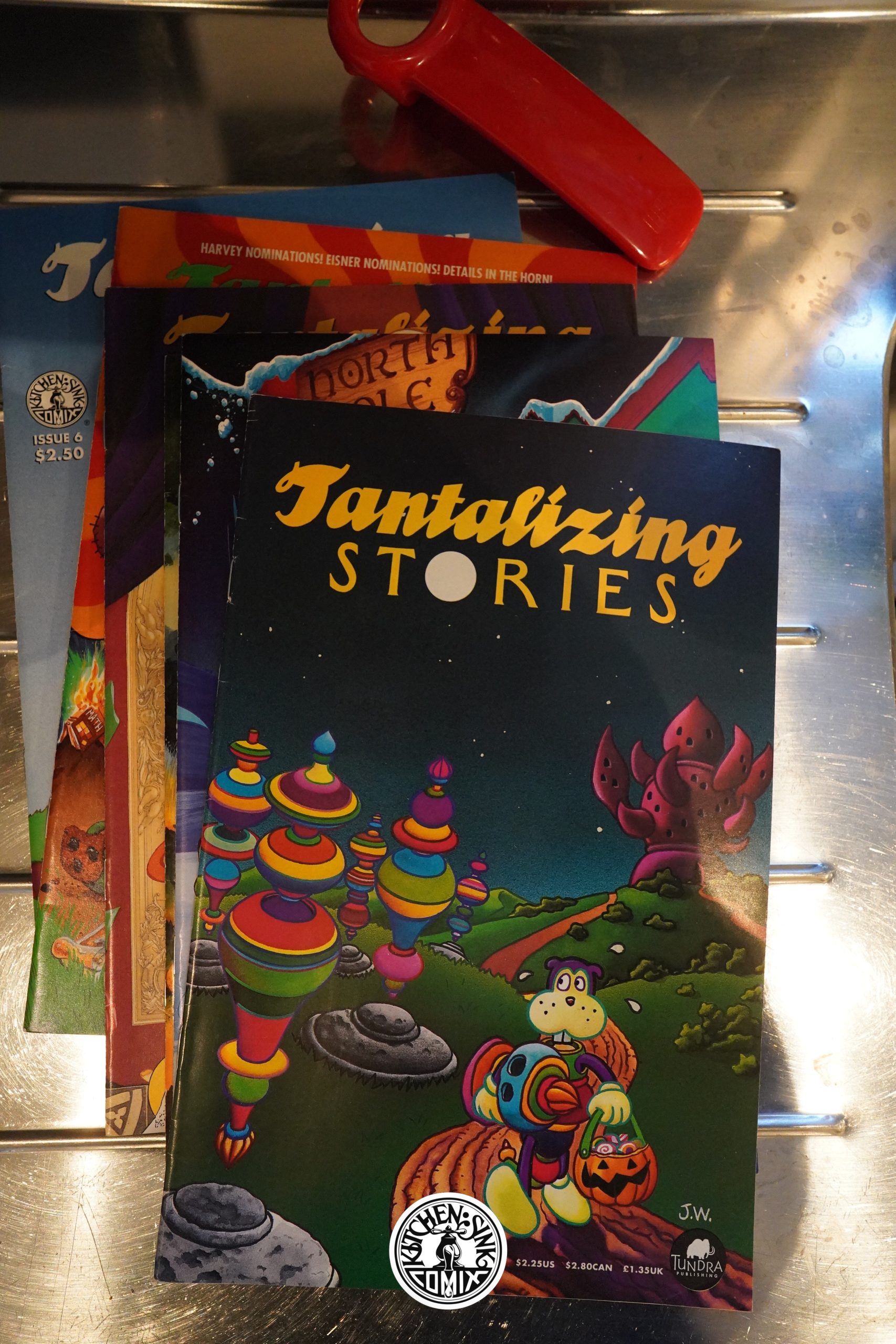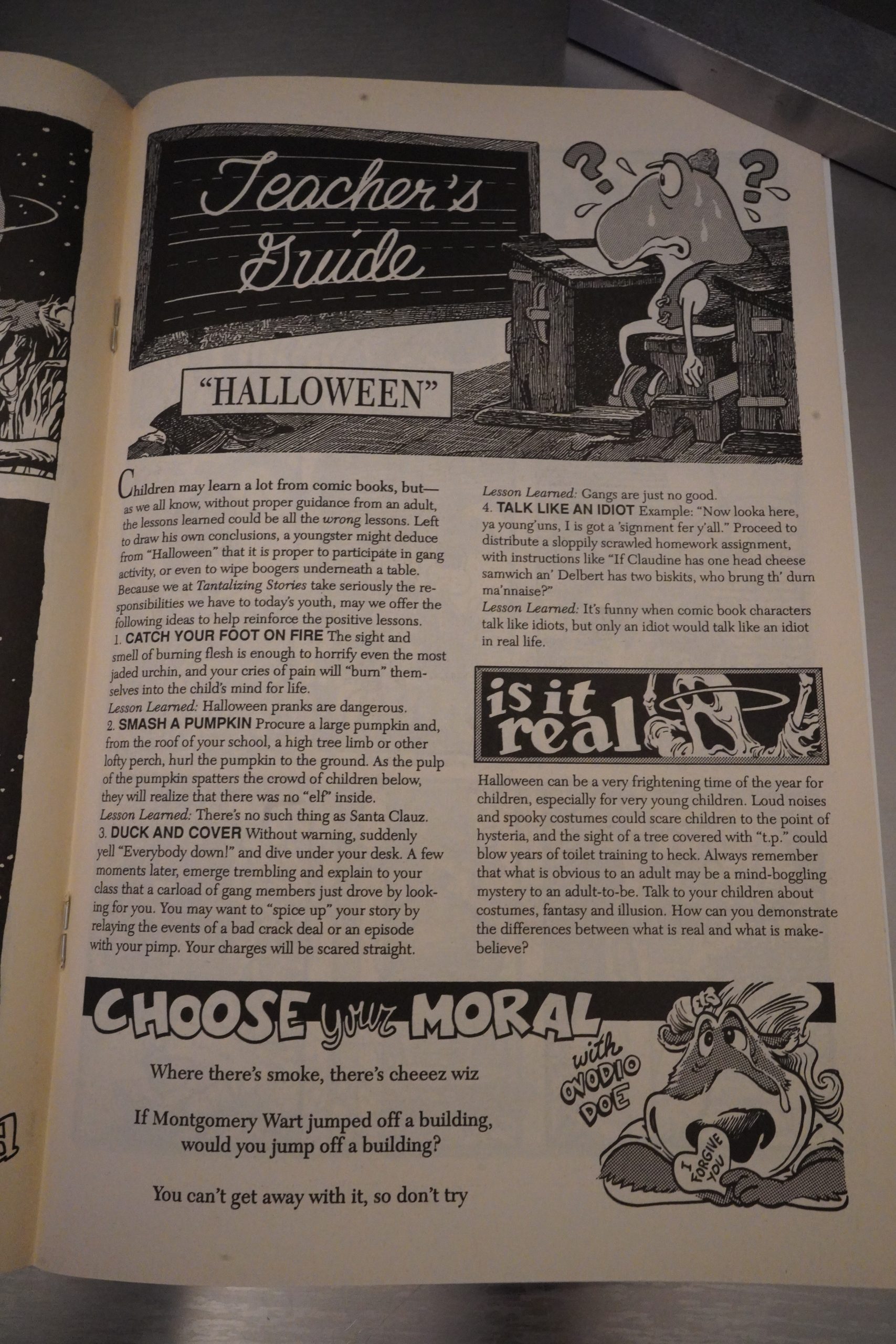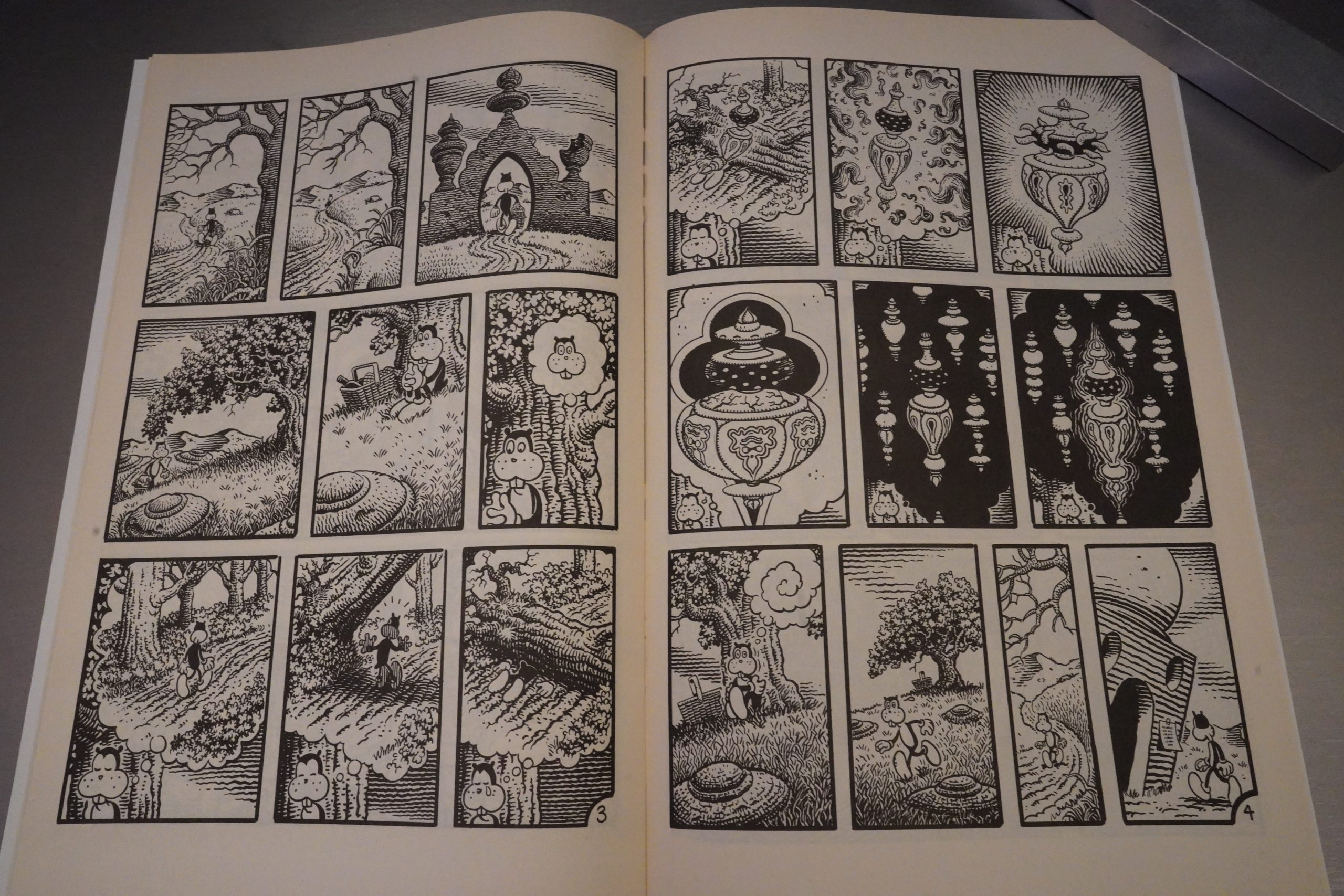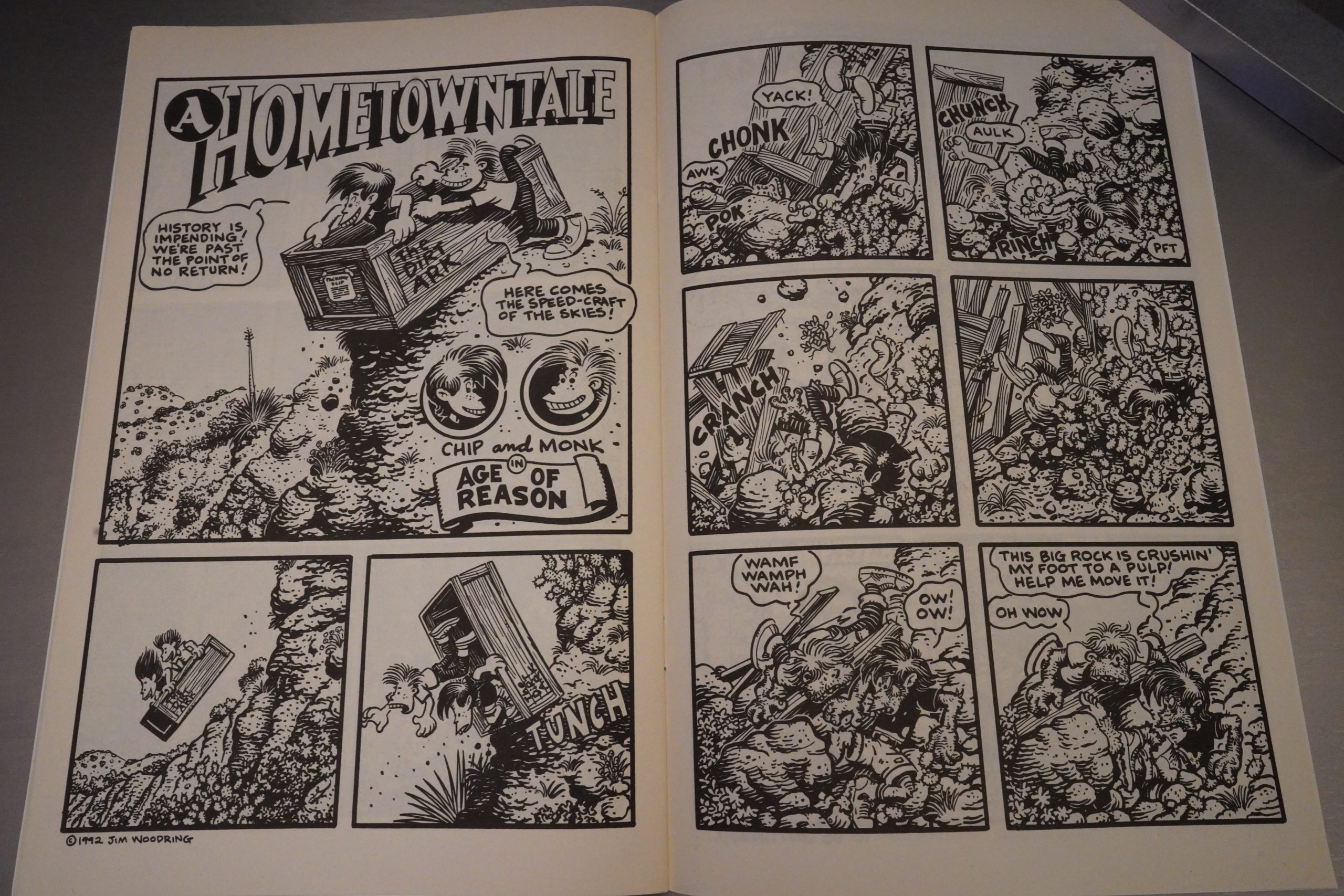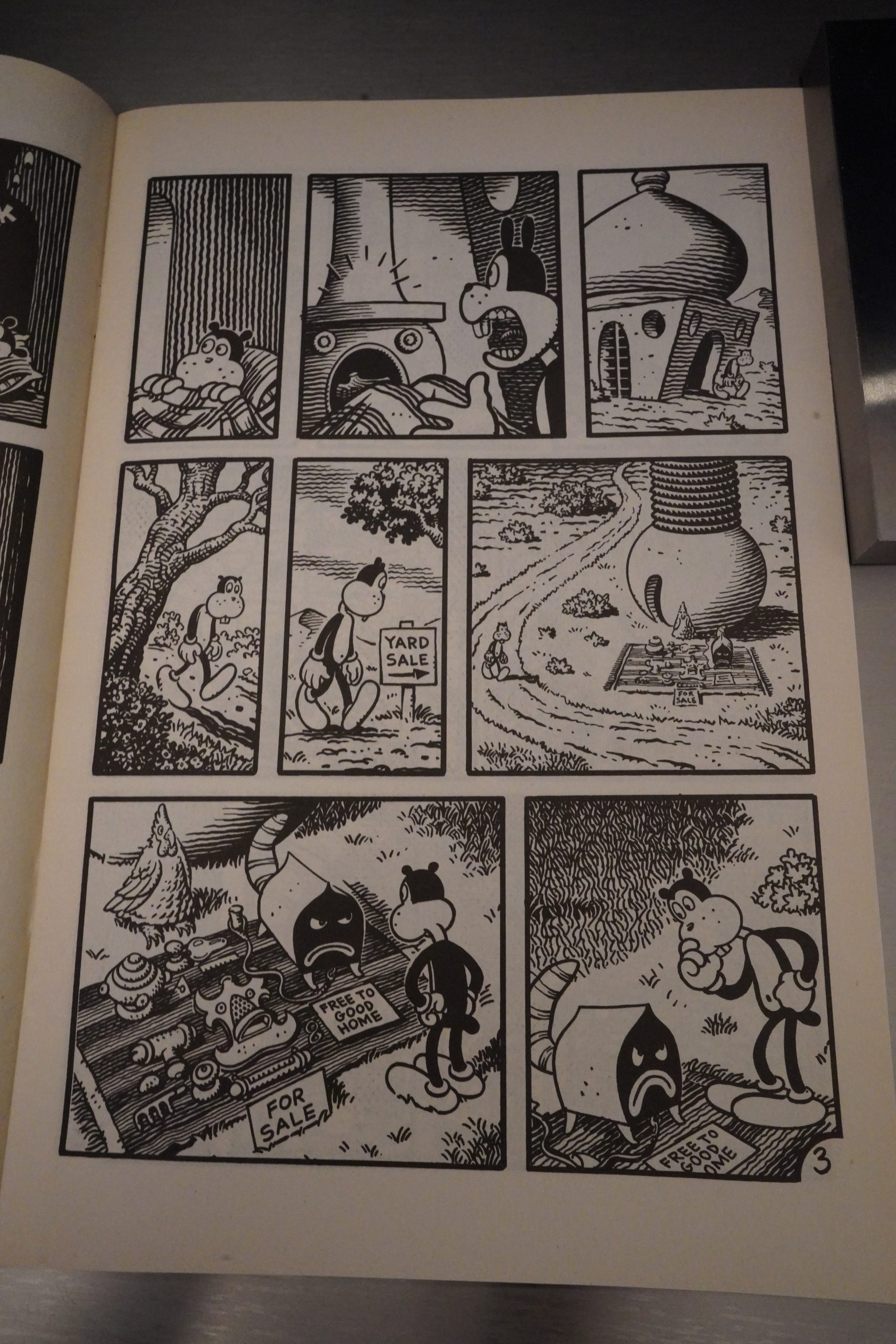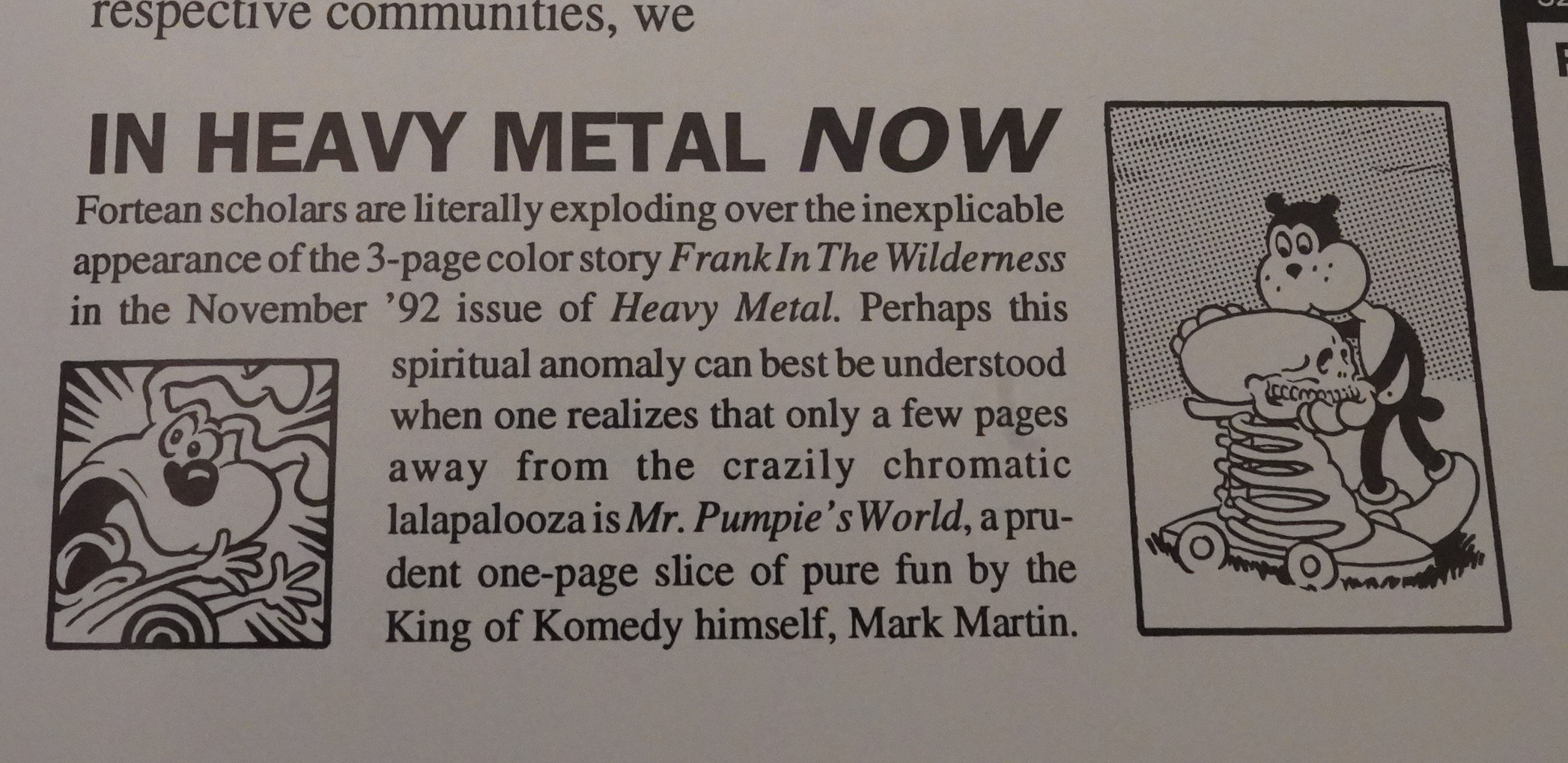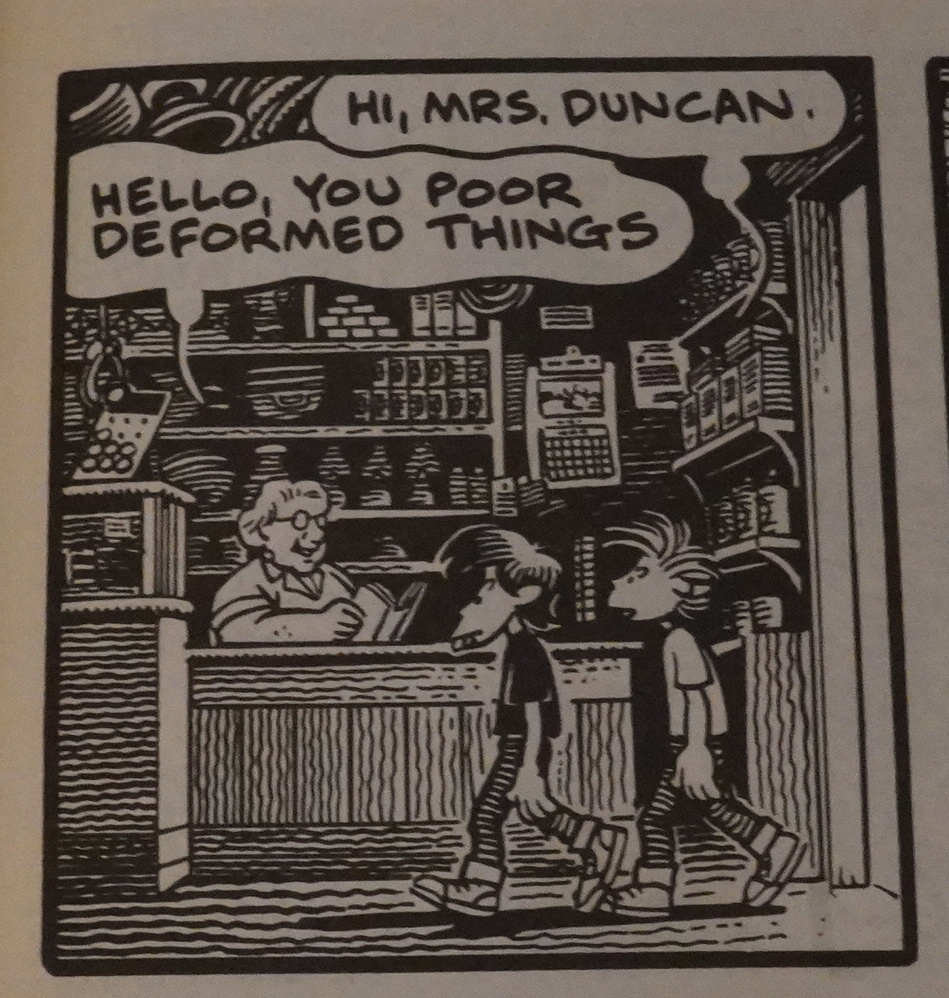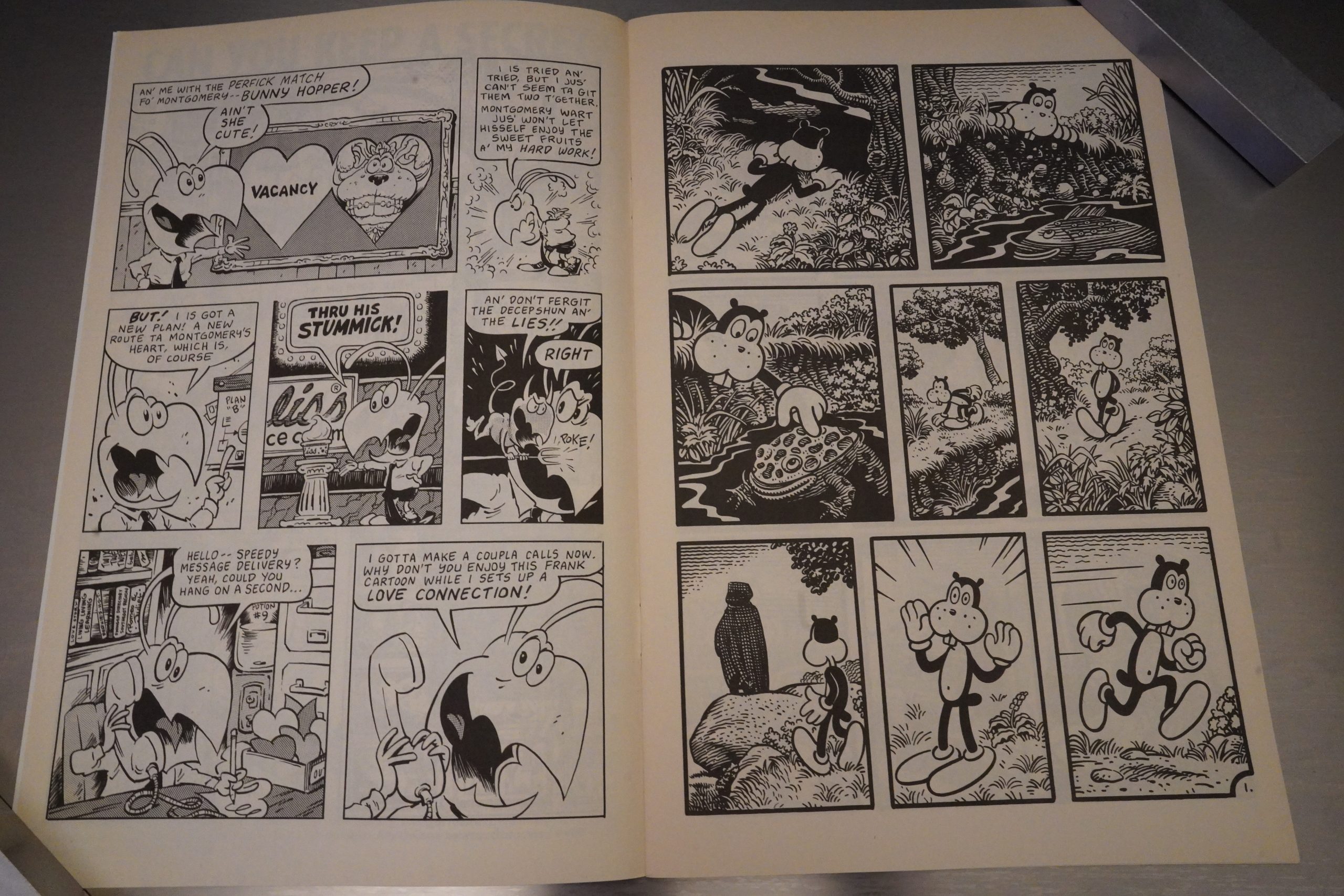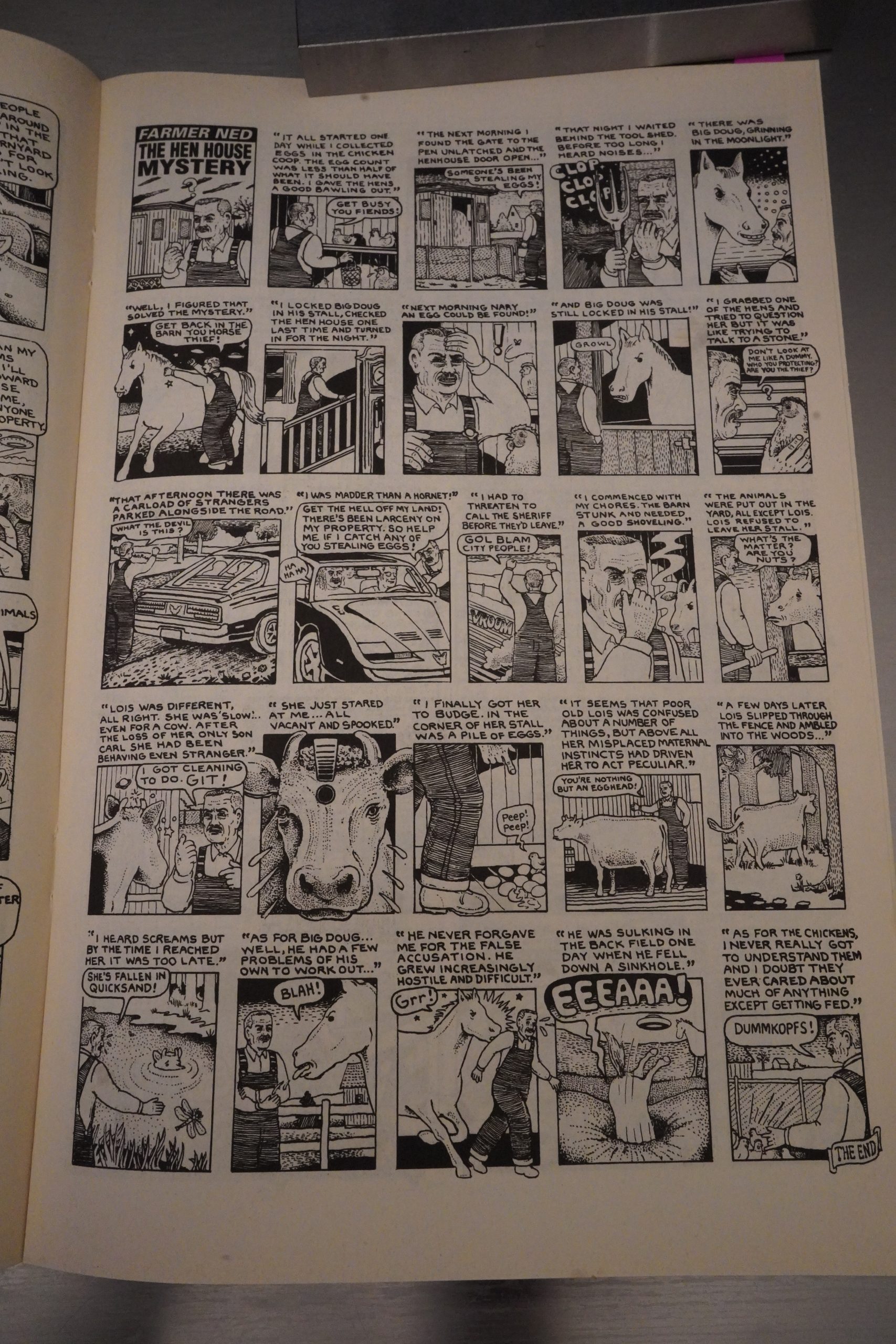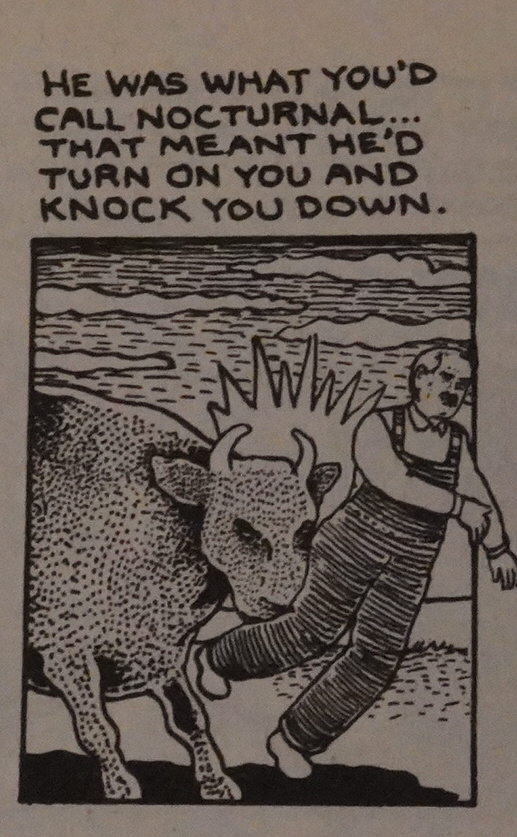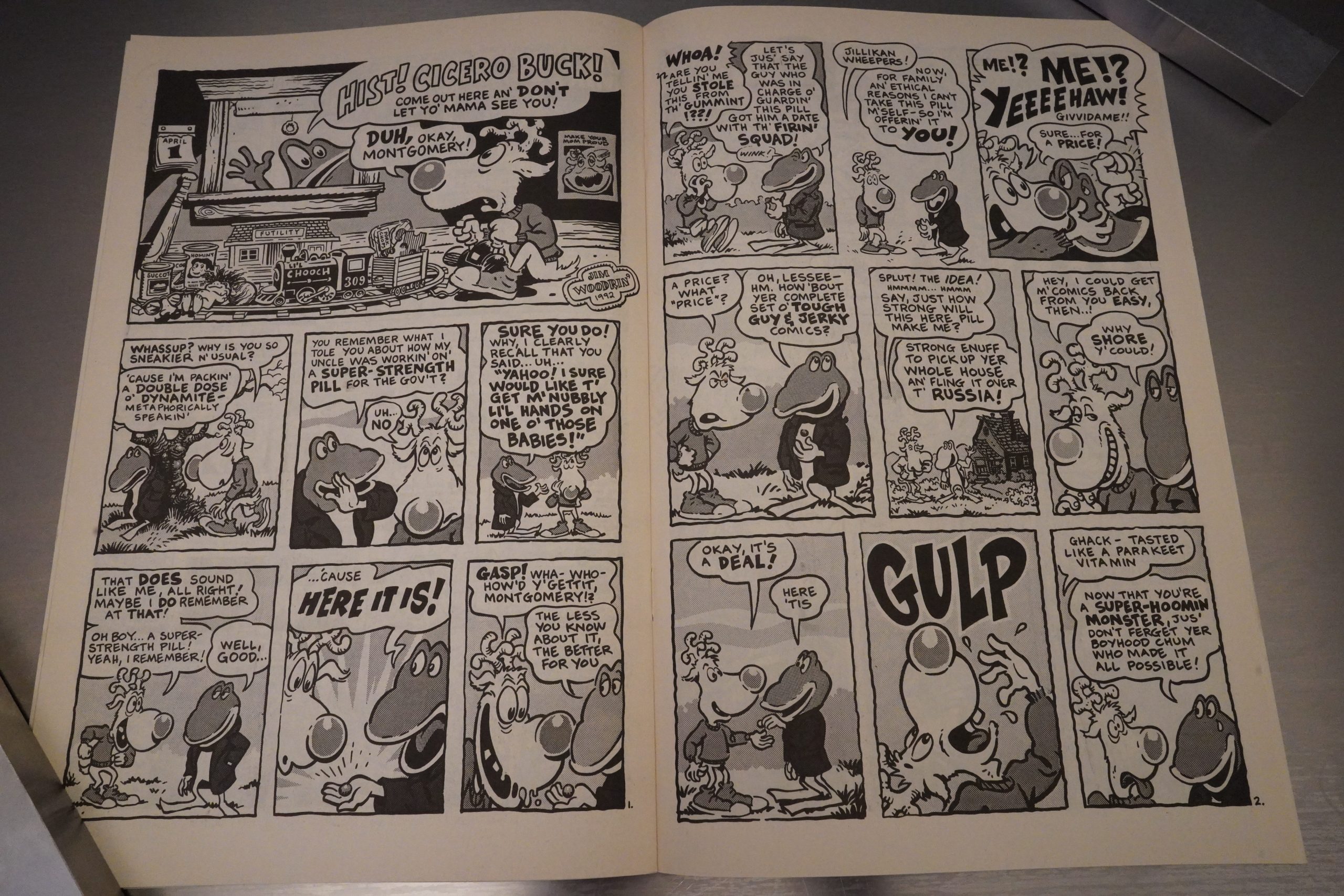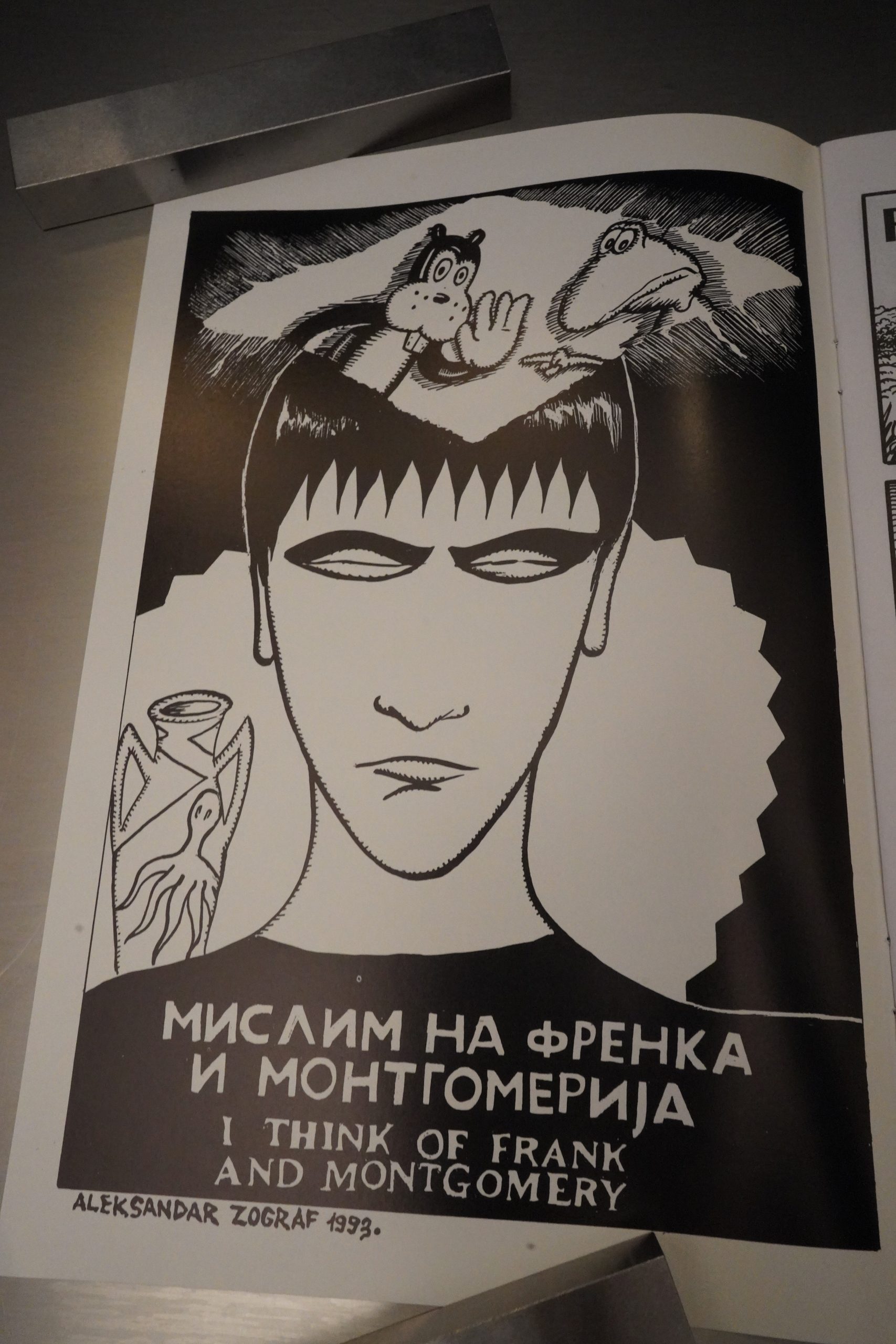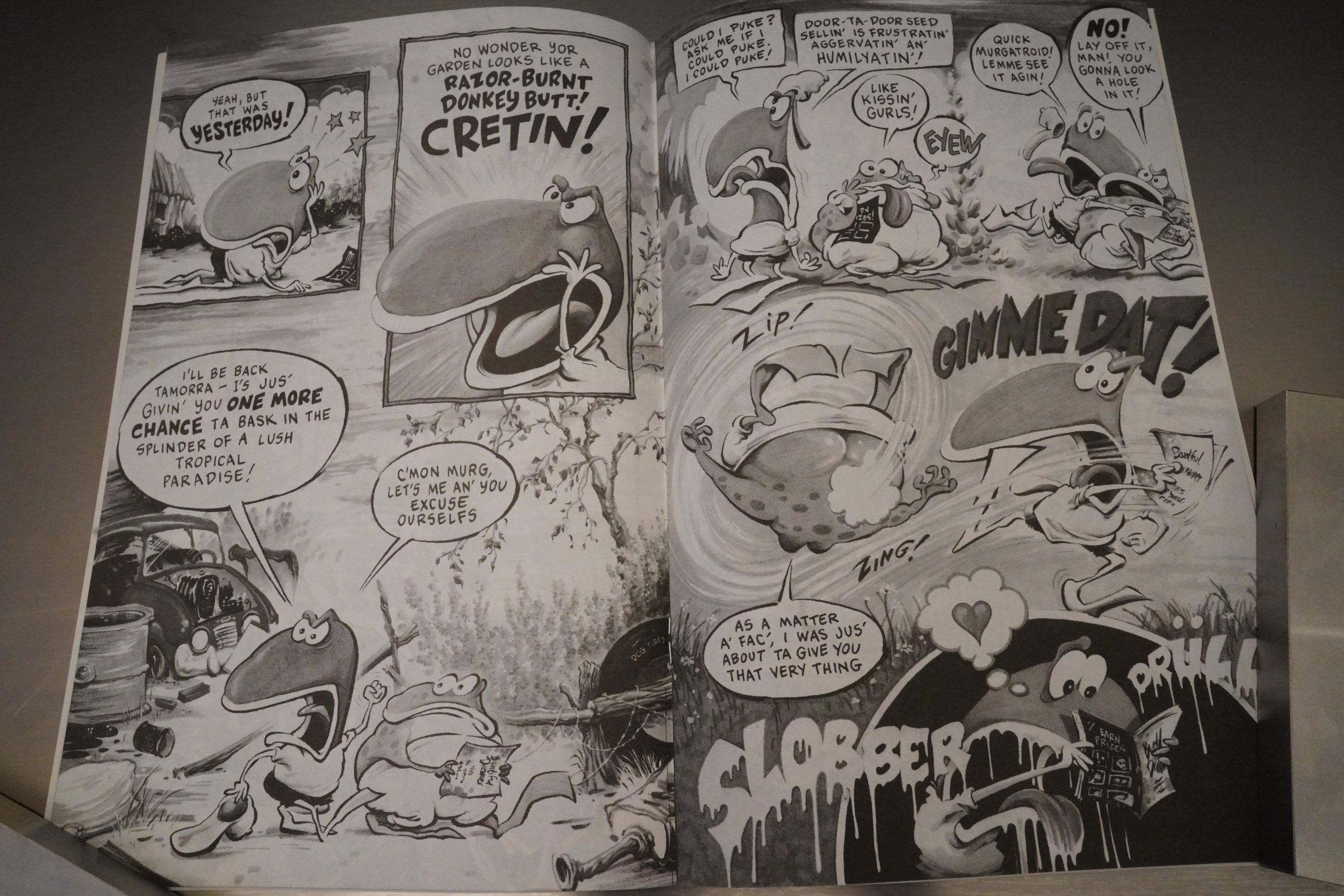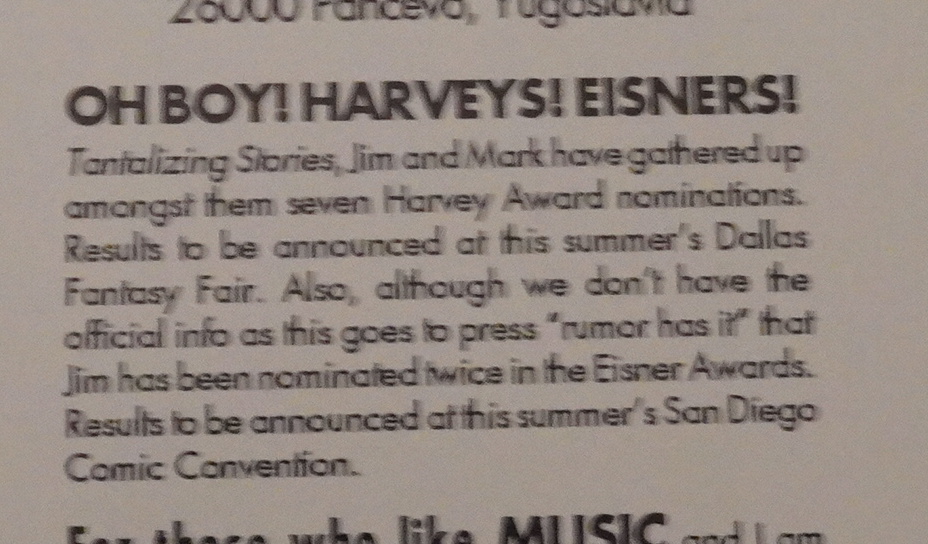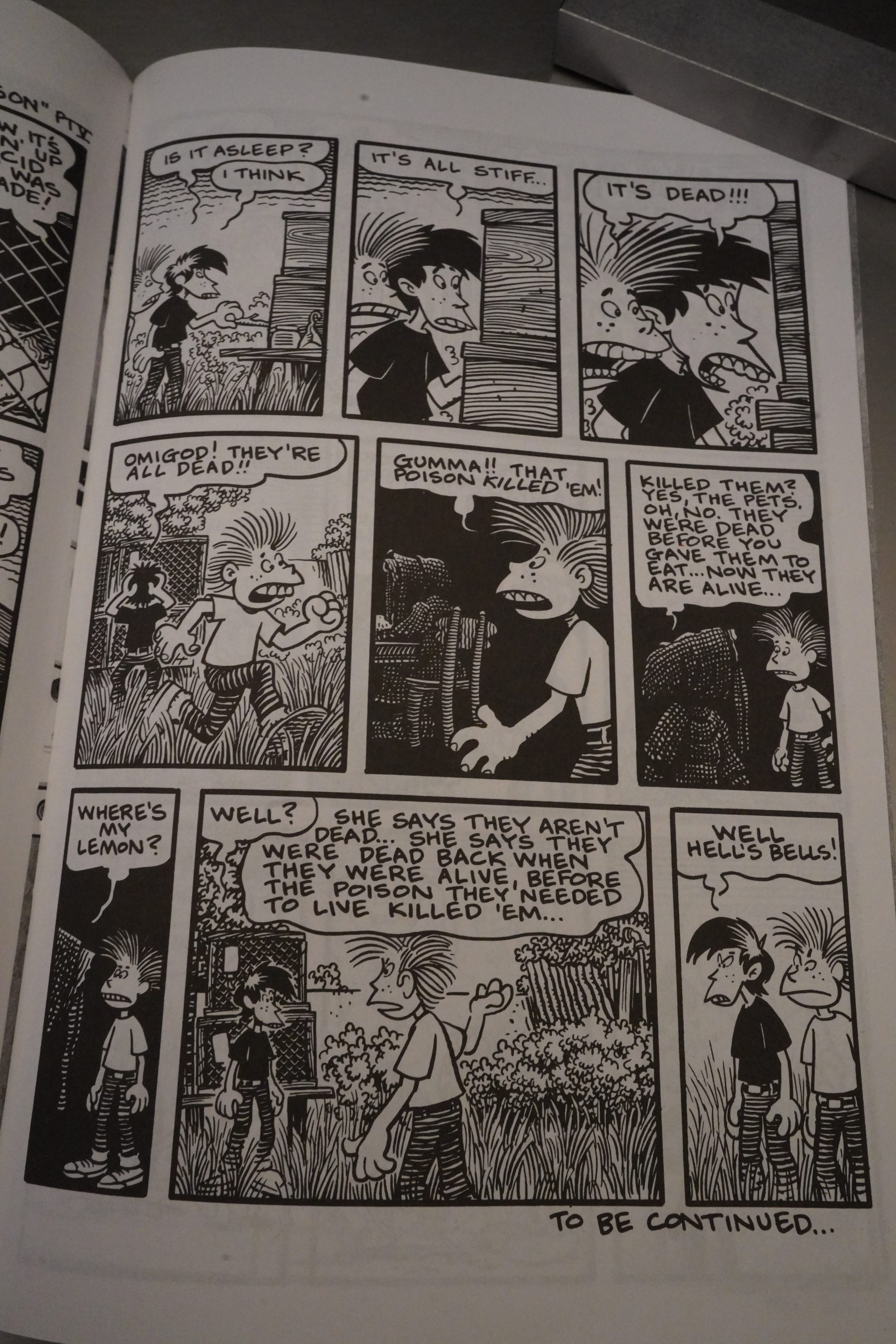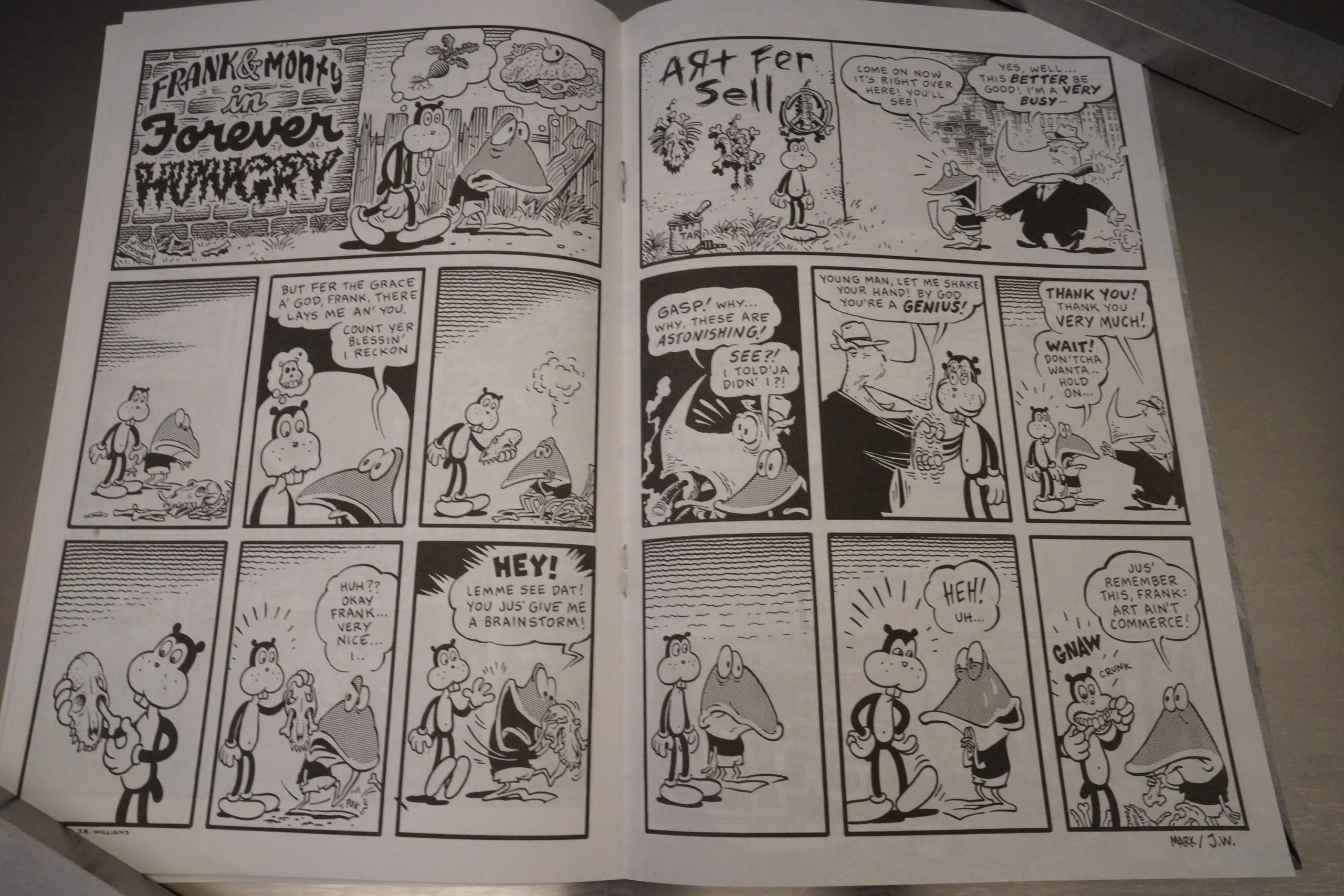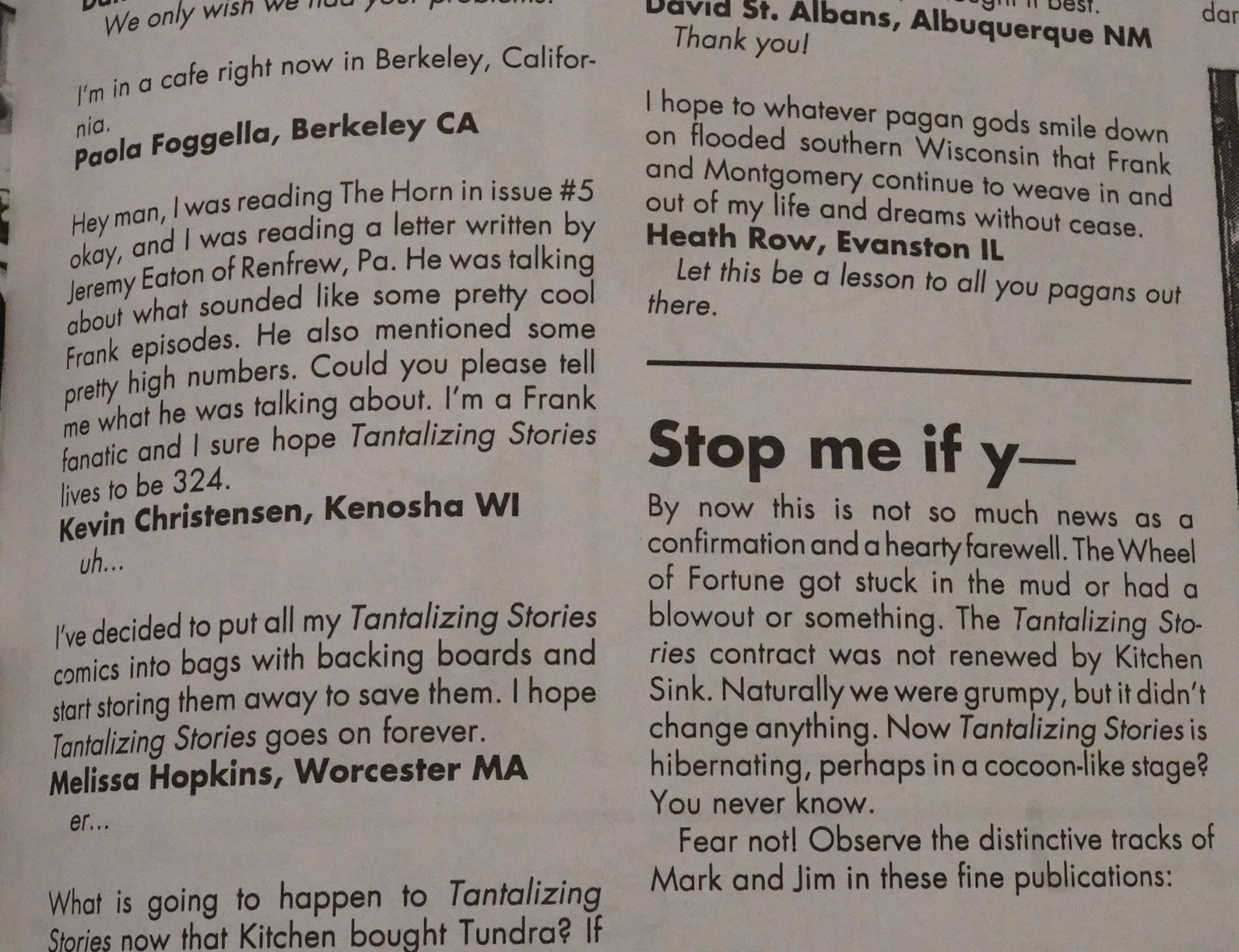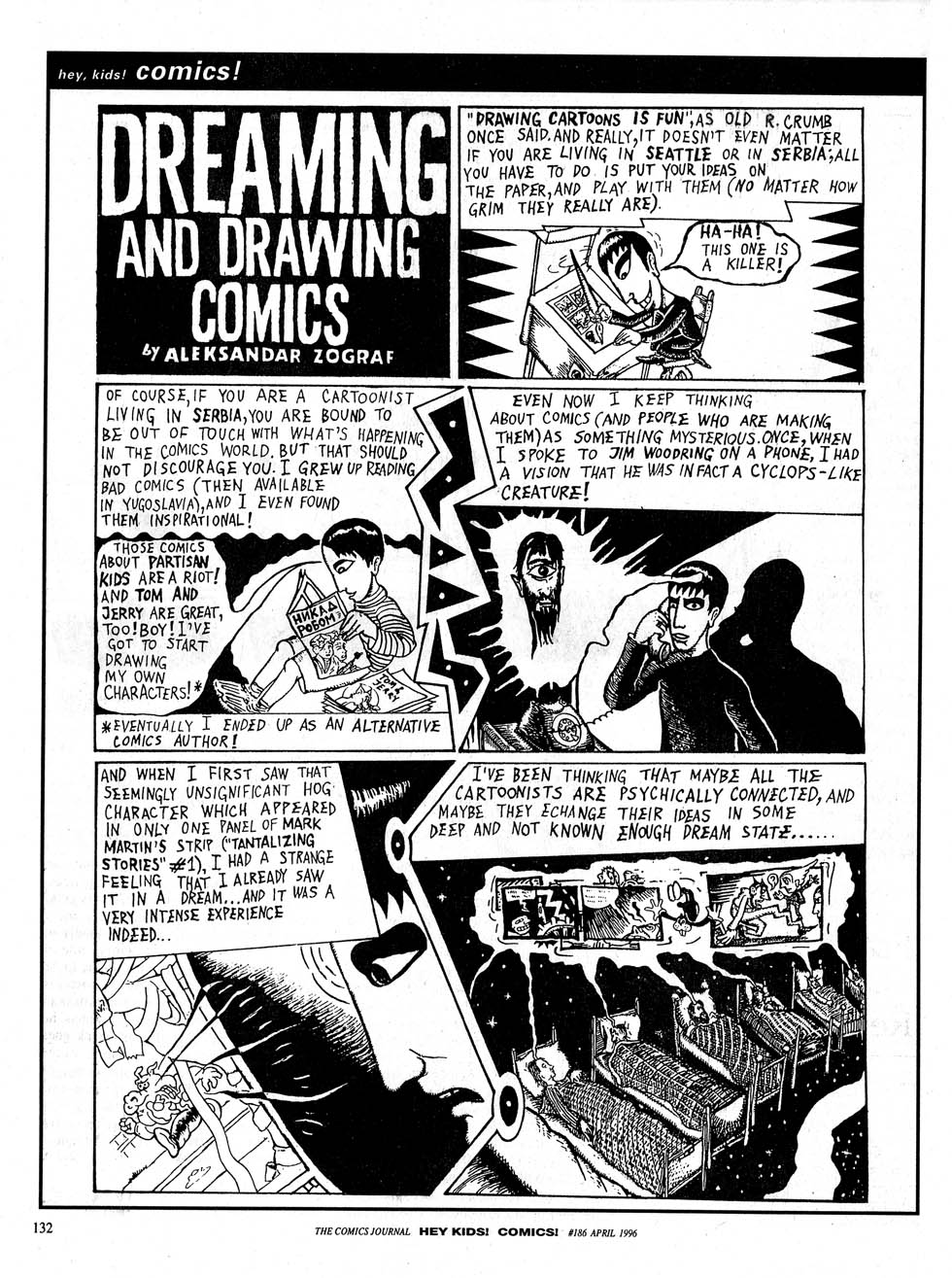Tantalizing Stories (1993) #1-6 by Jim Woodring and Mark Martin
I’ve had these comics for quite a while, but I bought them at random as I found them as back issues, so while I’ve read these issues before, I’ve never read them in sequence before. Thrilling, eh?
Tantalizing Stories is one of those rare two-person anthologies. Not rare because they aren’t frequently attempted — it makes sense for a couple of friends to get together and put out a book like this, because you can get it out more regularly than if you do it on your own (and it’s probably more fun to do, too) — but because they all fail pretty quickly. For various reasons: People don’t like anthologies in general, and one of the two may be more popular/more productive than the other, and so on. (There’s Love and Rockets, of course, which proves that it can be done, but…)
This two man anthology is pretty odd, though: I don’t think there’s much of a connect between Mark Martin’s zany and good-natured stories about these anthropomorphic children, and Jim Woodring’s unnerving and precise stories about Frank.
(And the cover doesn’t mention Martin nor Woodring, so I guess people just have to guess at who’s inside.)
In addition to the stories, we also get a couple text pages.
Is this where Jim Woodring started doing the Frank stuff? Hm… or did he start those in the Jim magazine? I forget. Anyway, it’s great, as usual.
But that’s not all — Woodring starts this serial about these two kids (perhaps as a response to Martin’s stories?), and it runs (as a somewhat continuous story over the six issues — sometimes just a couple pages per issue).
Ooh! Is that the first appearance of that cat/valise character in Frank?
The first five issues of this were published by Tundra, and Tundra was owned by Kevin Eastman, who also owned Heavy Metal at the time. So there’s some cross-pollination going on: Woodring is also featured in Heavy Metal.
Woodring’s story about the kids is a bit hard to get a grip on — it sometimes seems like it’s referencing what could be stuff that somebody could actually have done, but then it slips into uncharted waters. It’s fascinating and a bit unnerving.
The first two issues had good stuff, but reading these 24 page issues, they don’t really seem to work all that well as books? With the third issue, that changes, and suddenly it feels like I’m reading something vital and exciting. It’s both that they start rearranging things to get a better flow, and also that the pieces seem to start playing off each other a bit more.
And then next issue… six pages by Gerald Jablonski!? I love Jablonski’s insane pages, and they work well in context, but these are 24 page books, so I’m sure some people would feel like this is “cheating”.
But how can anybody not love a joke as corny as that?
Uhm… it says there that this Montgomery Wart story is by “Jim Woodrin'” — and the artwork doesn’t seem to be by Mark Martin? It doesn’t really look like Woodring, either, and the lettering certainly doesn’t look like Woodring. I guess it could be Martin just experimenting with his art, or it could be Woodring filling in, adapting Martin’s art style? comics.org says that it’s by Woodring… Oh, and Martin drew the Frank story? Wow. Now the book is really hopping.
Aleksandar Zograf thinks of Frank and Montgomery.
In the final two issues, Martin debuts a new art style. Looks great! It’s both more chaotic and more easy to read than the older style.
Oops, blurry. But this says that they’ve got seven Eisner/Harvey nominations for Tantalizing Stories, so it was a critical hit, at least.
Kevin Eastman “aqui-hired” Denis Kitchen for Tundra, and changed name to Kitchen Sink. Only one issue of Tantalizing Stories survived the transfer, and Woodring’s serial about the two kids ends like this. I don’t think it’s ever been completed? Which is a shame — it’s got something special going.
Heh. Martin and Woodring collaborate on a two-pager.
And on the letters page they confirm that they have indeed been cancelled.
It’s a shame, but not surprising. Once they really got going (from the third issue on), it’s an excellent, thrilling book to read, but it’s hard to see how this could ever survive in the US direct sales market.
Hugh Bonar writes in The Comics Journal #164, page 47:
The innate i mplication of the forgotten state
Of consciousness that Woodring describes is
one in which reality is seen as a series Ofvarying
expressions of a single,
unifying conscious-
ness. All thatone needs
is unimpeded sight to
intuit this, but how is
this expressed artisti-
cally? Woodring used
narrative in Jim as a
means Of subverting
narrative, but despite
their unpredictability
there was a linear pro-
gression of events.
Likewise, his recent
work in Tantalizing
Stories are straightfor-
ward narratives, inter-
nally consistent with
themselves, but more
authoritatively using
images in a way that
transcend linear con-
sciousness. Woodring
achieves great success
through his use of si-
lence. The consistent
silence ‘Of his “Frank
and Manhog” stories,
regularly appearing in
Tantalizing Stories,
makes us look carefully
into the detailed, fully-realized world of each
panel. The intention of the work as a whole is to
announce to us the importance of sight, but,
paradoxically, we can fulfill this intention by
merely looking into a single panel. The stories
are almost neurological in their intentions.
Tantalizing Stories are beautifully dark
fables of transformation, ostensibly children’s
stories but with a sense of terror and mystery
lurking within the fantastic imagery. There are
Arabian cities, bizarre creatures and inexpli-
cable, sensual machines. In the occasional color
work, as in the award-winning Tantalizing Sto-
ries Presents Frank in the River, every color is
taken to its extreme, an image of color, the
conception of color itself; everything seems
virtually present, always on the verge of incan-
descing. The stories involve arepetitive com-
petition between Frank, the innocent embodi-
ment Of contemplation, looking something like
a gentle, anthropomorphic cat, and Manhog, an
unnerving creature drawn straight from the
unconscious, the embodiment of all negative
human attributes — shame, fear, greed, stupid-
ity, etc. Frank watches the world as though he
were encountering it forthefirsttime—in “The
Mood,” from issue #2, Frank silently observes
first a shelf, then a wall, a slug, a candle, a
staircase, concluding, after nine panels, with
Frank staring out in mute shock, his eyes wide.
Manhog, meanwhile, generally runs around
stealing things, spying on people, trying to hurt
Frank anyway he can. Sometimes Frank wins is
these combative rituals; at other times his en-
emy triumphs, although Manhog’s “triumphs”
are invariably limited to successfully humiliat-
ing Frank.
The Comics Journal #160, page 9:
Jim Woodring and Mark Martin’s Tantaliz-
ing Stories and Roy Tompkins’ Trailer Trash
will to the end of their Tundra contracts under
KSP, but will not be renewed. Both will end with
their sixth issues. According to Jaime Riehle,
KSPMarketing and Promotions Manager, KSP,
influenced by Tantalizing Stories’ two Harvey
wins, is discussing the possible redesign and
renewal Of publishing Of that title with the two
creators.
Well, that didn’t happen.
Zograf did a page in Comics Journal…
Woodring is interviewed writes in The Comics Journal #164, page 65:
I’m also crazy about
Mark Martin’s work, and he keeps getting better and
better. He’s a great natural cartoonist. Working with him
on Tantalizing Stories was great because… well, because
he’ s real easy to deal with, but also because his constantly
accelerating rate Of improvement spurred me on to im-
prove my own work.
I think all the Frank material has been reprinted in various collections, but the rest hasn’t.
This is the one hundred and fifty-fifth post in the Entire Kitchen Sink blog series.

